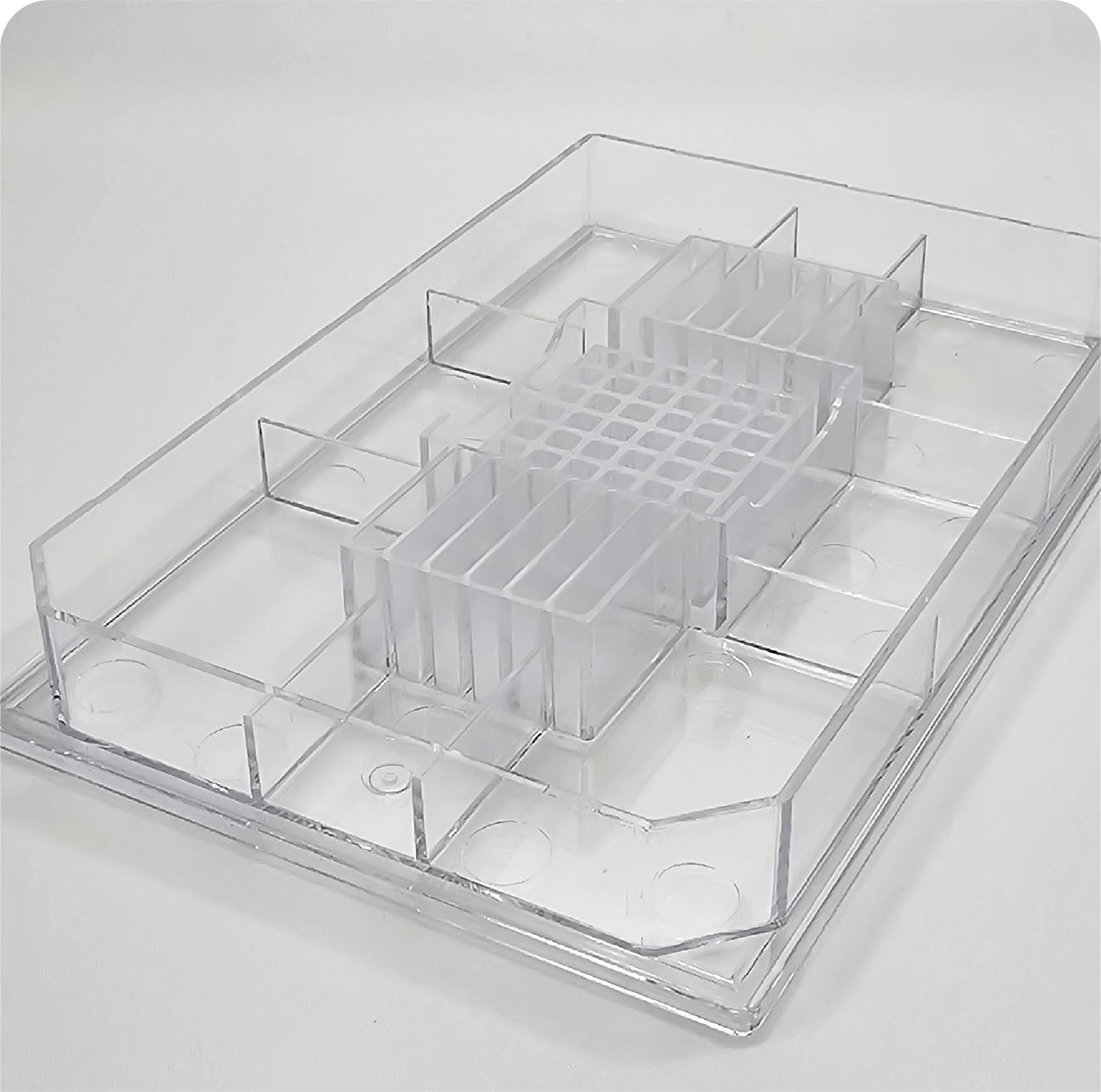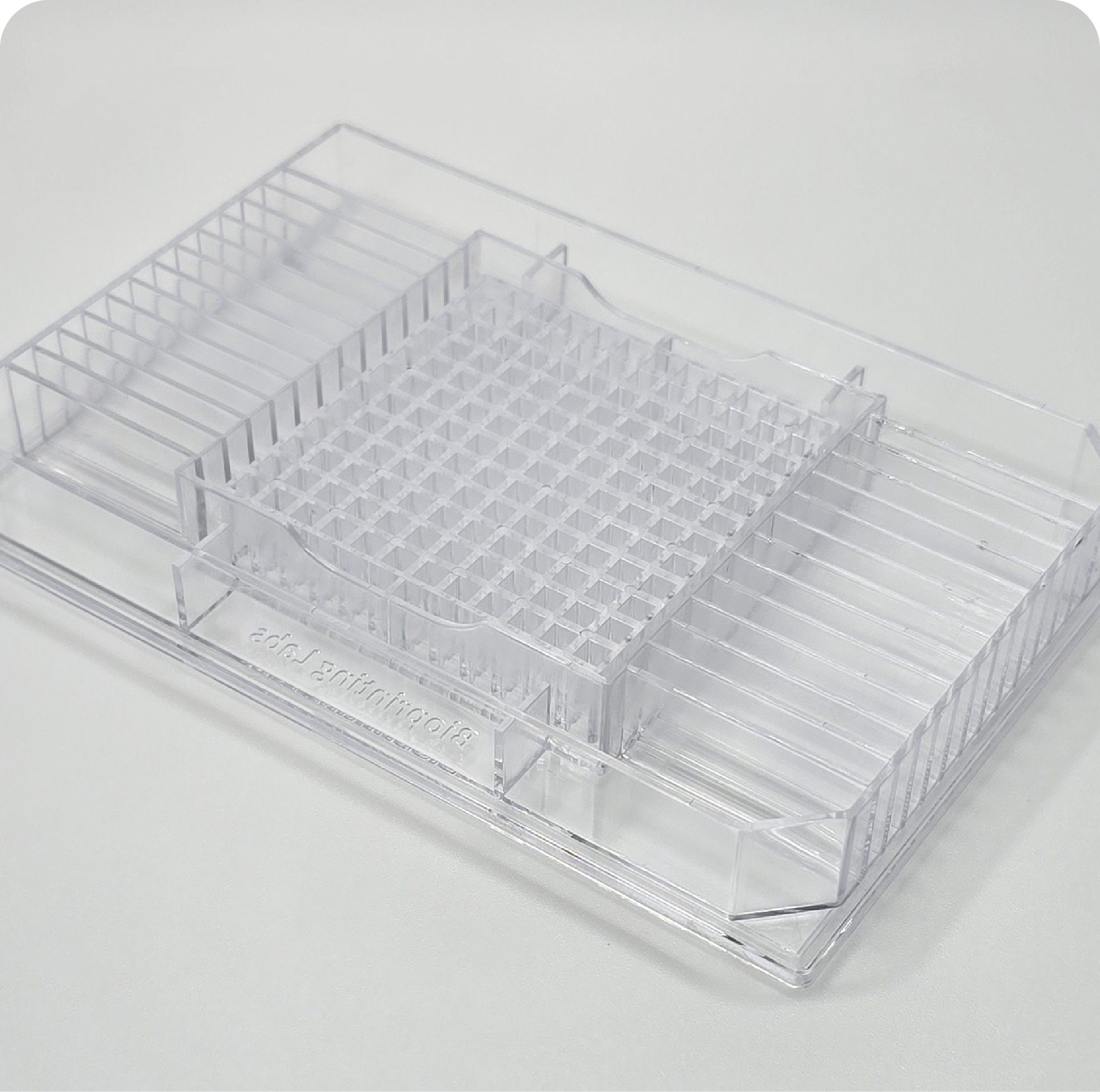How Dynamic 3D Cell Culture Works with Perfusion Plate
The perfusion plate is a complementary system to the pillar plate, enabling dynamic 3D cell and organoid culture for high maturity and advanced compound testing:
- Bi-directional flow generated without using pumps and tubes: Rapid flow rates (10 µL/sec) can be achieved in perfusion wells by sandwiching pillars into perfusion wells and tilting the plates on a digital rocker.
- Simple cell culture medium change: Fresh cell culture media added in reservoirs flow through microchannels into perfusion wells, ensuring efficient nutrient and oxygen delivery. Old media can be drained to lower reservoirs by tilting the sandwiched plates and removed by vacuum aspiration.
- Enhanced differentiation and maturation: Dynamic cell culture via rapid bi-directional flow supports improved organoid proliferation, maturation, and function.
- Overcoming limitations in dynamic organoid culture: Designed to enhance throughput and reproducibility in dynamic 3D cell culture and reduce necrotic core formation associated with traditional static 3D cell cultures.
- Simple combinatorial testing without using tubes: Combinatorial compound testing and multi-organoid connections can be conducted by rotating the pillar plate 90 degrees without using pumps and tubes.
- Compatibility with existing laboratory equipment: The pillar/perfusion plate is compatible with standard laboratory equipment, including microtiter well plate readers and fluorescence microscopes, lowering the entry barrier.
- Seamless integration for high-throughput screening (HTS) assays: Dynamically cultured 3D cells and organoids on the pillar plate coupled with the perfusion plate can be transferred to standard 384-well plates for downstream high-throughput analysis.
Key Features and Benefits
- Fast flow rates: Enhances cell growth and reduces necrotic core formation by ensuring rapid diffusion of nutrients and oxygen while effectively removing metabolic wastes.
- Higher organoid maturity: Promotes more physiologically relevant cell differentiation, increasing drug response accuracy.
- Scalable for industrial applications: Facilitates high-throughput screening (HTS) with 3D cells for the assessment of compound toxicity and efficacy.
- Seamless integration with high compatibility and flexibility: Integrates with existing laboratory automation and imaging systems for various cell cultures and assays.
Publications



